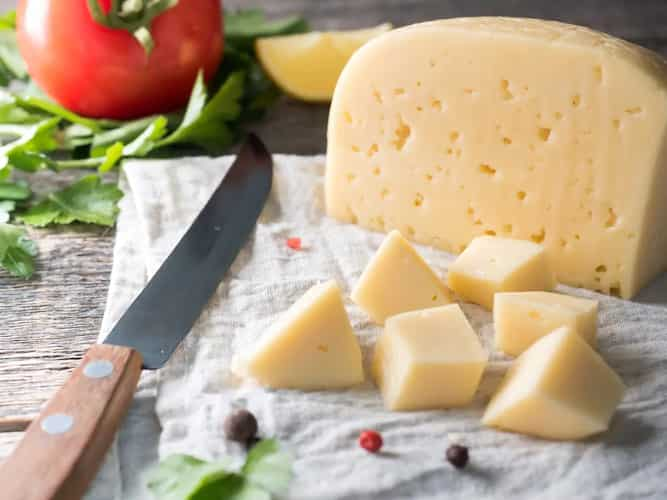"Most Americans have an idea of what Swiss cheese is, and it's the one with holes," says Liz Thorpe, author of The Book of Cheese: The Essential Guide to Discovering Cheeses You'll Love. "However, there isn't just one Swiss cheese. In this incredibly small nation, there are dozens or perhaps hundreds of different kinds of cheese produced." You have a lot to learn if your only experience with Swiss cheese has been the pale yellow slice that jazzes up a corned beef and rye sandwich, according to the expert. It's not really your fault, though.
Swiss Cheese History
Since the Middle Ages, Switzerland has been a centre for cheese production, and like many European nations, it has long taken great pride in its status as a gastronomic powerhouse. That seriousness has actually diminished its global appeal in a number of ways. Throughout much of the industrialised 20th century, a largely government-funded organisation known as the Swiss Cheese Union had complete control over both export and manufacturing, prescribing in no uncertain terms how, where, and when Switzerland's cheeses might be created. Out of the many famous heritage cheeses in the nation, the Union placed almost all of its support behind just three of the best-selling varieties: the earthy, nutty Gruyère; the aromatic, Parmesan-like Sbrinz; and Emmentaler, also known as "the one with the holes." (Appenzeller, a semi-hard fondue cheese, would eventually join the group.) The unapproved types were practically declared obsolete as a result, and the rest of the world only had a very limited understanding of Swiss cheesemaking. That lasted up until 1999, when a wave of corruption allegations caused the powerful Swiss Cheese Union to dissolve.
Cow's milk is used to make the great majority of cheeses in Switzerland. Finding cheese made from sheep or goat milk is quite uncommon; it happens very, very infrequently. Goats and sheep are typically found in more arid regions, in areas where it is extremely hot and dry and where grass doesn't grow as well. The geography and climate of Switzerland are ideal for cows. Of course, dairy farming is essential to cheese manufacturing, and, like terroir in wine, the distinctive topography of Switzerland has a significant impact on each and every step of the cheese-making process.
Here are some treasures to try
Raclette
The texture of raclette falls midway between semi-soft and semi-firm. Additionally, because it has a washed rind, it gets a fairly strong outside smell. It has a strong flavour, is salty, and has salami- and bacon-like characteristics together with cream and hazelnut. You cover anything neutral like a potato with this highly fragrant melted cheese.

Försterkäse
The canton of St. Gallen is the origin of this semi-soft thermalized cow's milk variety, which is wrapped in fir bark for a distinctive woodiness. "It's washed in salt water, so it's kind of stinky smelling but very meaty tasting, and it has this aromatic quality from the bark binding," says the maker. It's quite difficult to find here, but there are a lot of other Swiss cheeses that are offered under various names and are extremely comparable.
Scharfe Maxx
It has an intensely meaty scent and flavour that is nutty, oniony, almost bacon-like. It is rinsed in salt water. Although the cheese is solid, when you bite into it, it has an astonishingly rich, delicate texture similar to cold butter. It tastes pretty good.
Etivaz
A small group of farmers determined that Gruyere manufacturing was too slack and that they wanted to create a cheese that would mimic Gruyere production from earlier times. In the summer, it is fully handmade in high-alpine cabins. After being naturally smoked, the cheese is made in a cauldron over an open flame. It really does taste like cheese from 200 years ago.
Moser Screamer
Spreadable triple crème with a smooth white rind may appear modest at first glance, but it has a powerful flavour. They are buttery in the same way that Brie is, but most Brie sold in our country is entirely made of butter, cream, and salt because consumers prefer it that way. But these cheeses are incredibly animal-like, like cow patties. Even though they are creamy and buttery, eating them makes you feel like you are on a farm.


